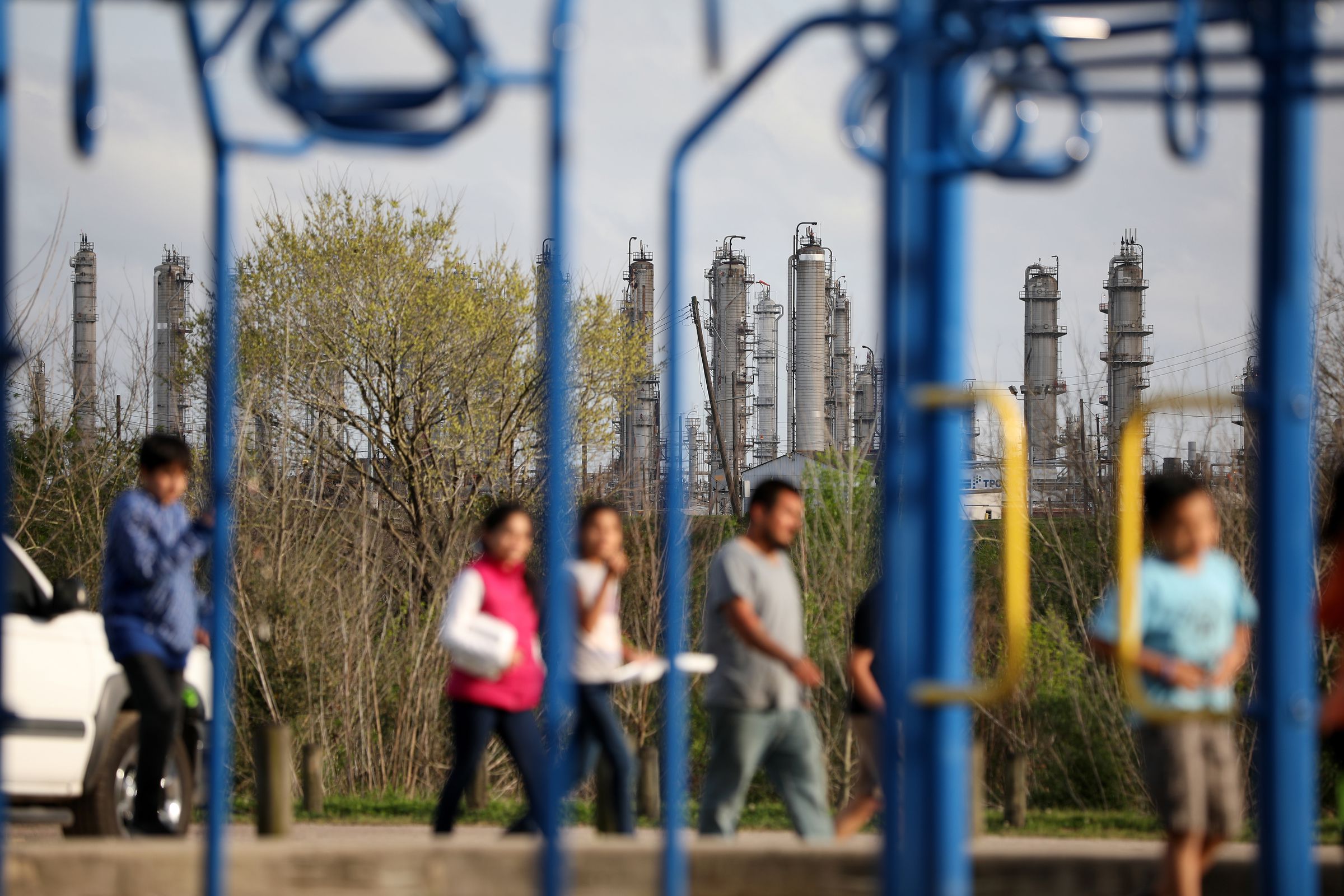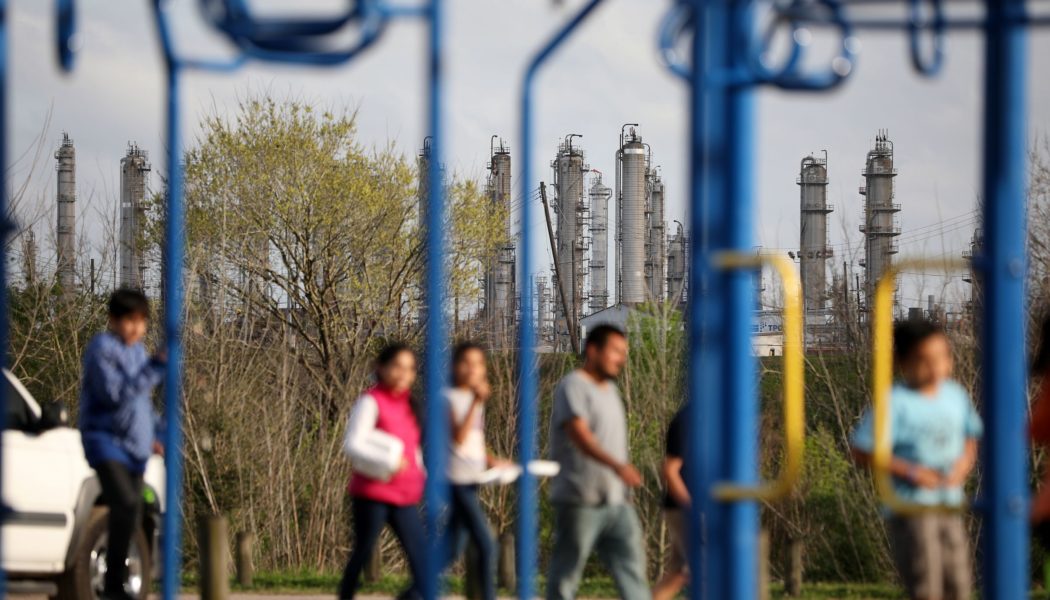Oil company Occidental has new plans to build a carbon capture hub along the Texas Gulf Coast. It might tackle greenhouse gas emissions — but not the pollution wrecking air quality.

A controversial tactic for slowing climate change is picking up steam in Texas: capturing carbon dioxide emissions from smokestacks. While that might reduce CO2 emissions heating up the planet, it could pose new problems for communities already saddled with industrial pollution.
Oil giant Occidental announced late last week that it leased 55,000 acres along the Gulf Coast of Texas to build out a hub for carbon capture technologies. The idea is to capture carbon dioxide emissions from nearby chemical plants, refineries, and factories. That CO2 then travels via pipeline to underground storage sites within Occidental’s proposed hub.
The prospect of these new kinds of pipelines crisscrossing through communities already has some environmental advocates spooked. Oil and gas companies like Occidental, on the other hand, have been eager to adopt carbon capture tech if it can keep their business afloat despite federal and state efforts to transition to clean energy. Companies can keep producing fossil fuels and petrochemicals — and generating other kinds of pollution like soot and smog in the process — while purporting to fight climate change at the same time.
In other words, carbon capture becomes a way for companies to cast themselves as environmentally friendly because they say they’re dealing with their greenhouse gas emissions. The caveat is that they’re not necessarily tackling other kinds of pollutants that affect air quality and public health. Moreover, they might introduce additional risks from new carbon capture infrastructure.
Occidental’s proposed carbon capture hub would sprawl across three counties between Beaumont and Houston, Texas. It’ll be ideally located near a lot of sources of pollution, according to the March 2nd press announcement. “This hub is located between two of the largest industrial corridors in Texas so captured CO2 can be efficiently transported and safely sequestered … companies can plug into this hub for access to shared carbon infrastructure,” Jeff Alvarez, president of the Occidental subsidiary 1PointFive Sequestration, said in the announcement.
Sharing that infrastructure helps solve a big problem for carbon capture: that it’s been prohibitively expensive to deploy. Building a hub near a high concentration of refineries and chemical plants means Occidental will get more bang for its buck. And the Houston area happens to host the biggest petrochemical manufacturing complex in the Western hemisphere.
That concentration of polluters also means that residents nearby have to live with a lot of soot and smog. And the poor air quality isn’t spread out evenly across the Houston area, according to a 2020 report commissioned by two environmental organizations: the Natural Resources Defense Council and Texas Environmental Justice Advocacy Services.
Pollution in the region affects poor households and neighborhoods of color more than others, the report found. Residents of color were exposed to twice as much pollution burden as white residents. People living in poverty were similarly exposed to 50 percent more pollution burden than more affluent households, which is even more of a reason to wean the economy off of fossil fuels and petrochemicals. Instead, carbon capture might do the opposite by prolonging the life of polluting facilities.
Pipelines, including those for CO2, can bring an added risk. In 2020, a pipeline carrying captured carbon dioxide contaminated with hydrogen sulfide burst near the majority-Black community of Satartia, Mississippi. The rupture sent at least 45 people to the hospital after enveloping the town in a haze. Even uncontaminated CO2 at high concentrations is an asphyxiant that can choke airways and even car engines, stalling vehicles as people try to get away.
More communities might have to navigate these potential hazards, new and old, if carbon capture hubs start to pop up around the US. The bipartisan infrastructure law passed in 2021 earmarked $12 billion for capturing and storing carbon dioxide. Occidental is gunning to make itself a leader in this arena. The company expects its Texas hub, a project it named Bluebonnet, to be operational by 2026, with the capacity to store 1.2 billion metric tons of carbon dioxide.









